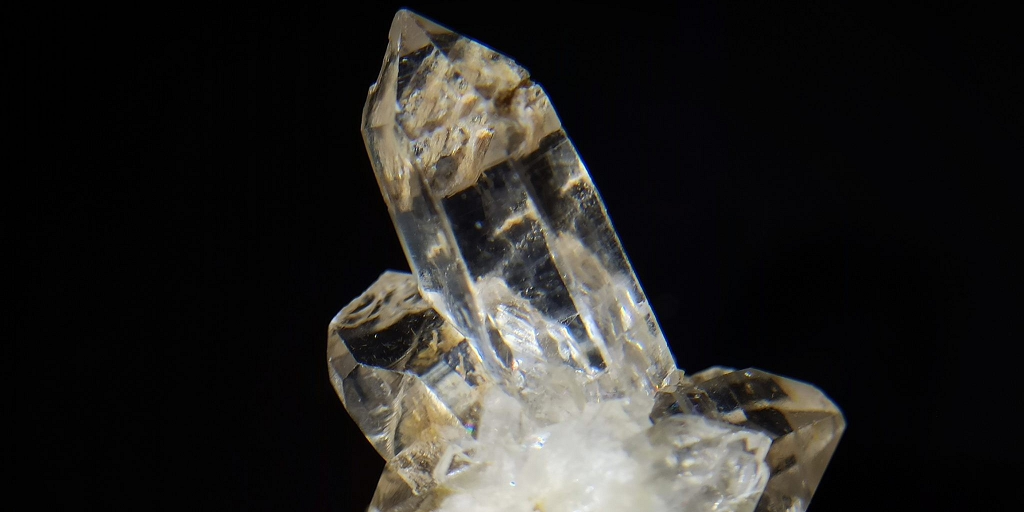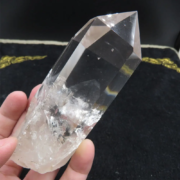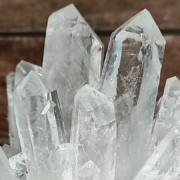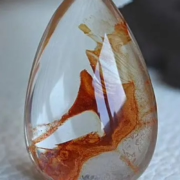Colorless crystal
Basic Information
- Chemical composition: The main component is silicon dioxide (SiO₂), and its pure crystalline form makes it colorless and transparent.
- Color: Colorless and transparent, in an ideal state, without any color or hue interference, with extremely high transparency, which can make the light pass through almost unhindered.
- Hardness: The Mohs scale is 7, which, like ordinary crystal, makes it relatively wear-resistant, not easily scratched or damaged, and suitable for a variety of processing and wearing purposes.
- Specific gravity: about 2.65, its specific gravity is relatively stable, which can be used as a reference index for identifying colorless crystals.
- Refractive index: Usually between 1.544-1.553, this optical property allows colorless crystals to undergo specific refraction and reflection phenomena when light is passed, resulting in a unique optical effect.

Origin
- Brazil: Brazil is one of the important sources of colorless crystal, and its output of colorless crystal is of high quality, large crystal and good transparency, and occupies an important position in the international market.
- China: Known as the “Crystal Capital” of Donghai County in China’s Jiangsu Province, it is home to some of the largest producers of colorless crystal, the production and quality of which is second to none in the country. In addition, Hainan Yangjiaoling is also one of the production areas of colorless crystal, and has produced a large number of high-quality piezoelectric crystals and smelted crystals.
- Other regions: The United States, Africa and other regions also have a certain amount of colorless crystal output, and the colorless crystals from these origins have their own characteristics, providing a rich choice for the market.
class
- Natural colorless crystal: Formed entirely by natural geological processes, it may contain a small amount of gas-liquid inclusions or mineral impurities inside, but the overall transparency is high. Natural colorless crystals are the most precious and rare, especially those crystals with large particles, high transparency and no obvious flaws, which have high collection value and ornamental value.
- Synthetic colorless crystal: Colorless crystal made by chemical synthesis by artificially simulating the growth environment of crystal. Its physical properties and chemical composition are similar to those of natural colorless crystal, but because it is synthetic, the output is large, the price is relatively low, and it is often used in jewelry production and industrial use.
- Smelting colorless crystal: A colorless crystal obtained by smelting natural crystal or quartz ore at high temperature. The transparency and purity of this crystal are relatively low, and there may be more bubbles and impurities inside, but due to its low cost, it is also widely used in some ordinary ornaments and handicrafts.
use
- Jewelry making: Because of its pure and transparent appearance and good optical properties, colorless crystal is often used to make various high-end jewelry, such as necklaces, bracelets, earrings, rings, etc. It can be used alone to show a simple and elegant temperament, or it can be paired with other gemstones to create a gorgeous and brilliant effect.
- Optical instruments: Because colorless crystals have a high refractive index and transparency, they can accurately refract and focus light, so they have a wide range of applications in the field of optical instrument manufacturing. For example, it can be used to manufacture optical components such as lenses, prisms, optical windows, etc., which are used in optical instruments such as microscopes, telescopes, cameras, etc.
- Collectible investment: High-quality natural colorless crystals, especially those with special optical effects or unique inclusions, have high collectible value and investment potential. With the increasing awareness and demand for colorless crystals in the market, its price is gradually rising, and it has become the object of attention of many collectors.
- Energy Healing: In some theories of spirituality and energy healing, colorless crystals are believed to have effects such as balancing energy, purifying the mind, and enhancing intuition. It is regarded as a gemstone that can help people improve their spiritual state and promote physical and mental health, and is often used in meditation, yoga and other spiritual activities.
- Industrial uses: The piezoelectric effect of colorless crystals makes them important applications in the electronics industry. It can be used to manufacture electronic components such as quartz oscillators, filters, etc., and is widely used in communications, computers, aerospace and other fields. In addition, colorless crystals can also be used as additives in the manufacture of glass, ceramics, enamels and other materials to improve the hardness and transparency of these materials.






Leave a Reply
Want to join the discussion?Feel free to contribute!